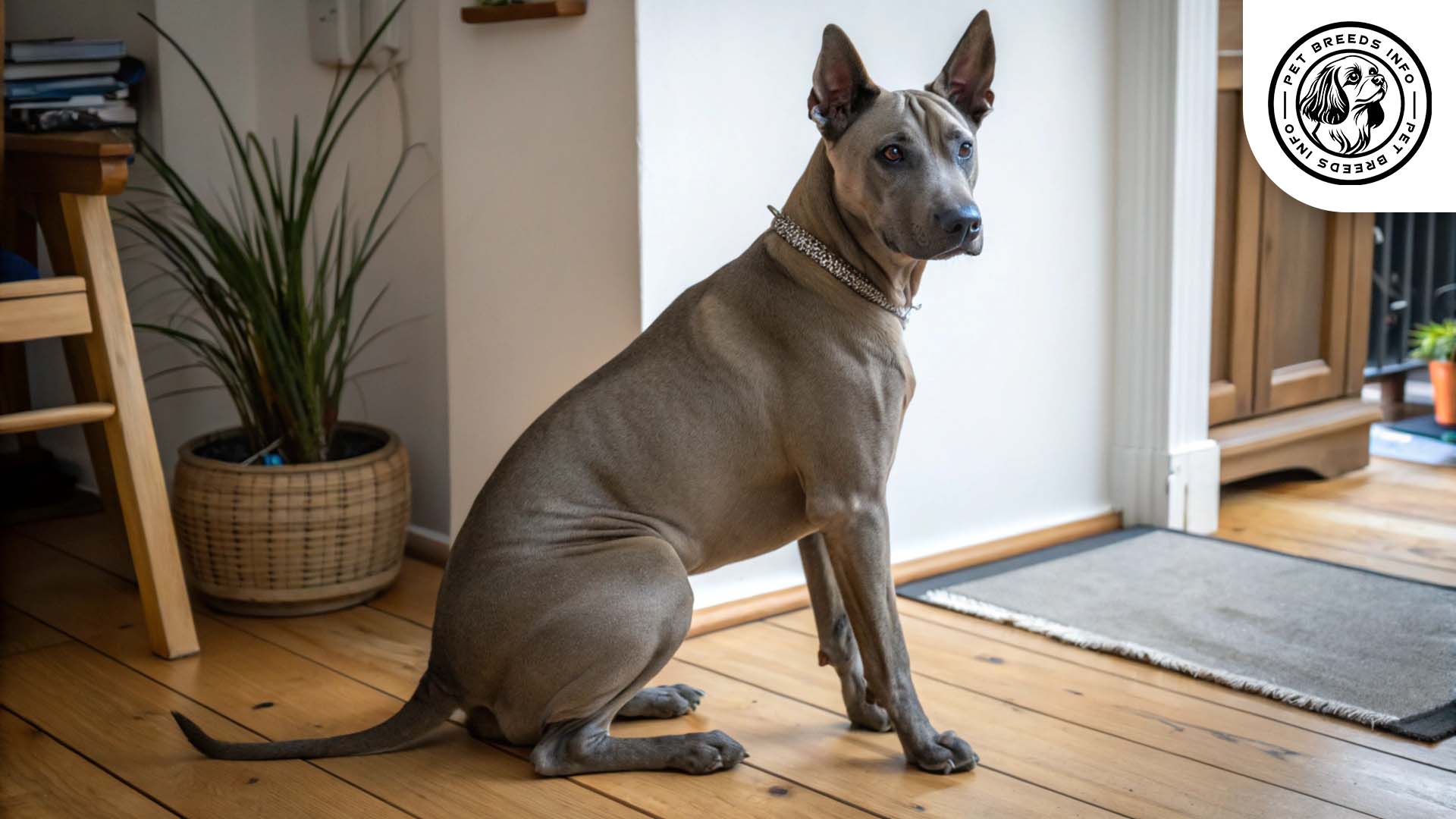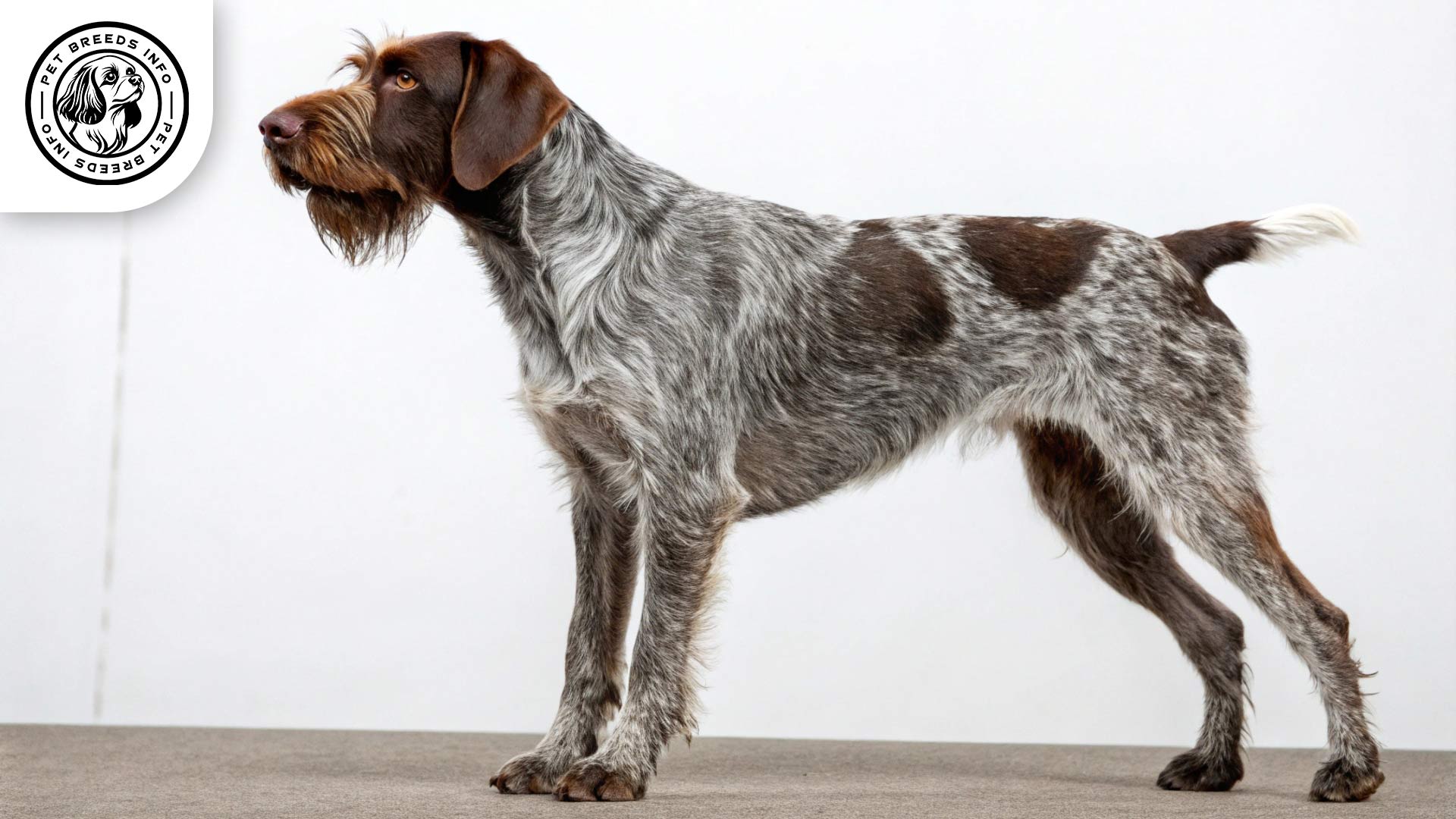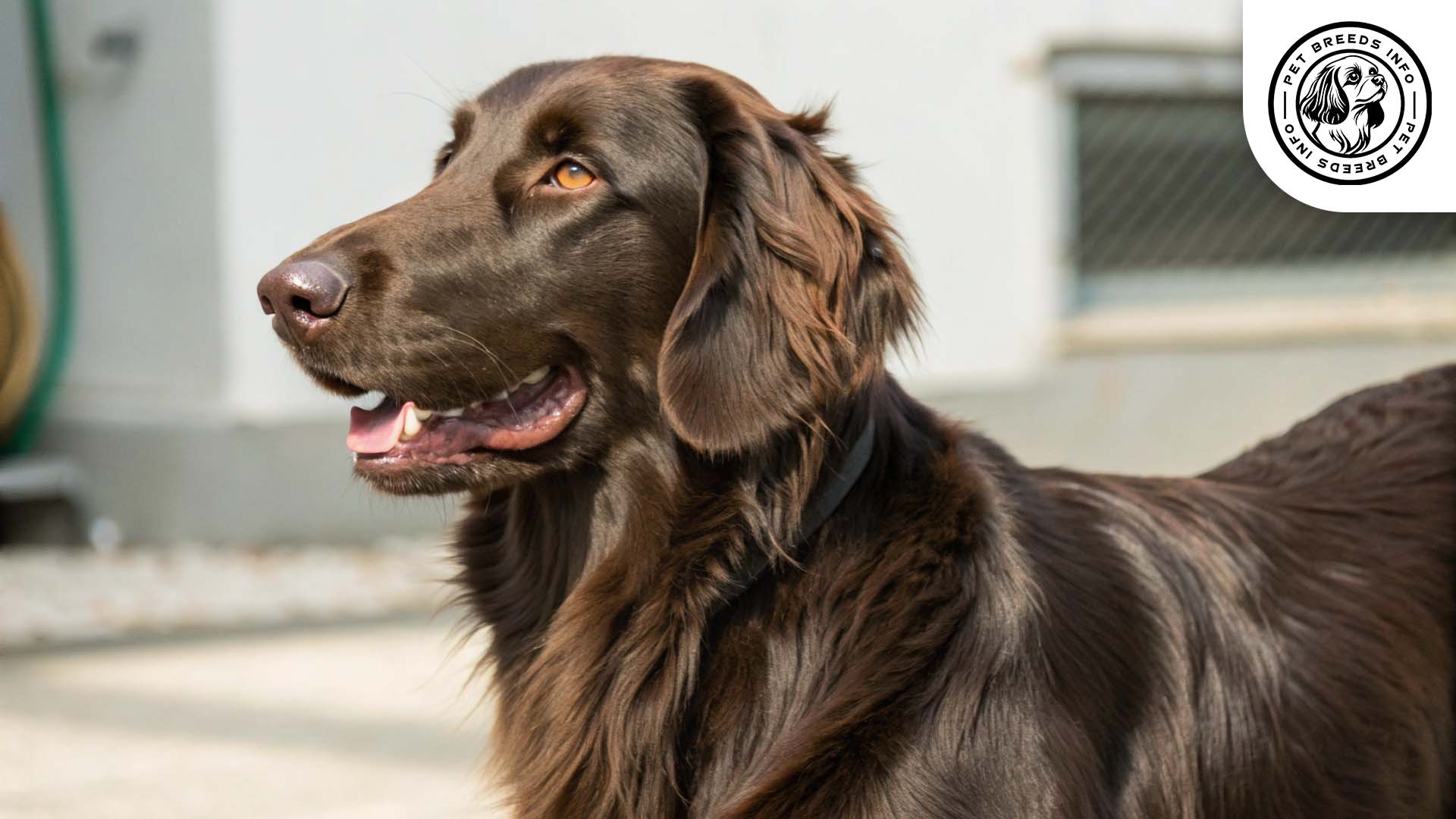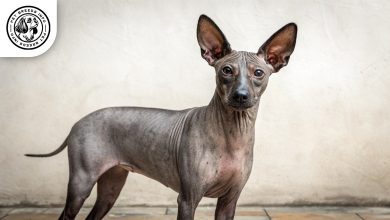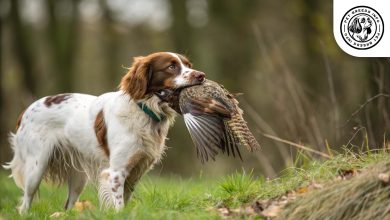Thai Ridgeback Dog Breed: Size, Health, Price & Personality
General Introduction of the Breed
The Thai Ridgeback, known as “Thai Lang-An” in Thailand, is a rare and ancient dog breed originating from Thailand. It is also sometimes referred to as the Mah Thai Lang Ahn. This breed has been used for hunting and as a guard dog for centuries, particularly in eastern Thailand, where it was traditionally bred for its agility, strength, and protective nature.
The Thai Ridgeback’s signature feature is its ridge of hair running along its back in the opposite direction of the rest of its coat, similar to the Rhodesian Ridgeback. Historically, the breed was relatively isolated in remote regions, which has contributed to its distinct lineage and characteristics.
Table of Contents
| Weight | 35-75 lbs (16-34 kg) |
| Lifespan | 12-15 years |
| Diet | High-quality dry/wet food, protein-rich nutrition |
| Care | High exercise needs, minimal grooming, sensitive to cold |
| Health | Prone to hip dysplasia, dermoid sinus, and allergies |
| Color | Red, black, blue (gray), fawn; some with black masks |
| Nature | Intelligent, independent, protective, loyal |
| Price | $1,500 – $3,000 (breeder); adoption possible but rare |
Physical Characteristics
The Thai Ridgeback is a medium-sized, athletic dog with a sleek and muscular body. Males typically stand between 22 to 24 inches (56 to 61 cm) tall and weigh between 50 to 75 pounds (23 to 34 kg), while females are slightly smaller, measuring 20 to 22 inches (51 to 56 cm) in height and weighing 35 to 55 pounds (16 to 25 kg).
The breed has a short, smooth coat that comes in several colors, including red, black, blue (gray), and fawn. Some Thai Ridgebacks also have a distinctive black mask.
They have almond-shaped eyes that are brown in most dogs, though blue or amber eyes may occur in blue-coated Thai Ridgebacks. Their ears are large, triangular, and stand erect, giving them an alert and attentive expression. The tail is slightly curved and tapers to a fine point.
The most recognizable trait of this breed is the “ridge” along its back, where hair grows in the opposite direction from the rest of the coat. There are multiple ridge patterns, making each Thai Ridgeback unique.
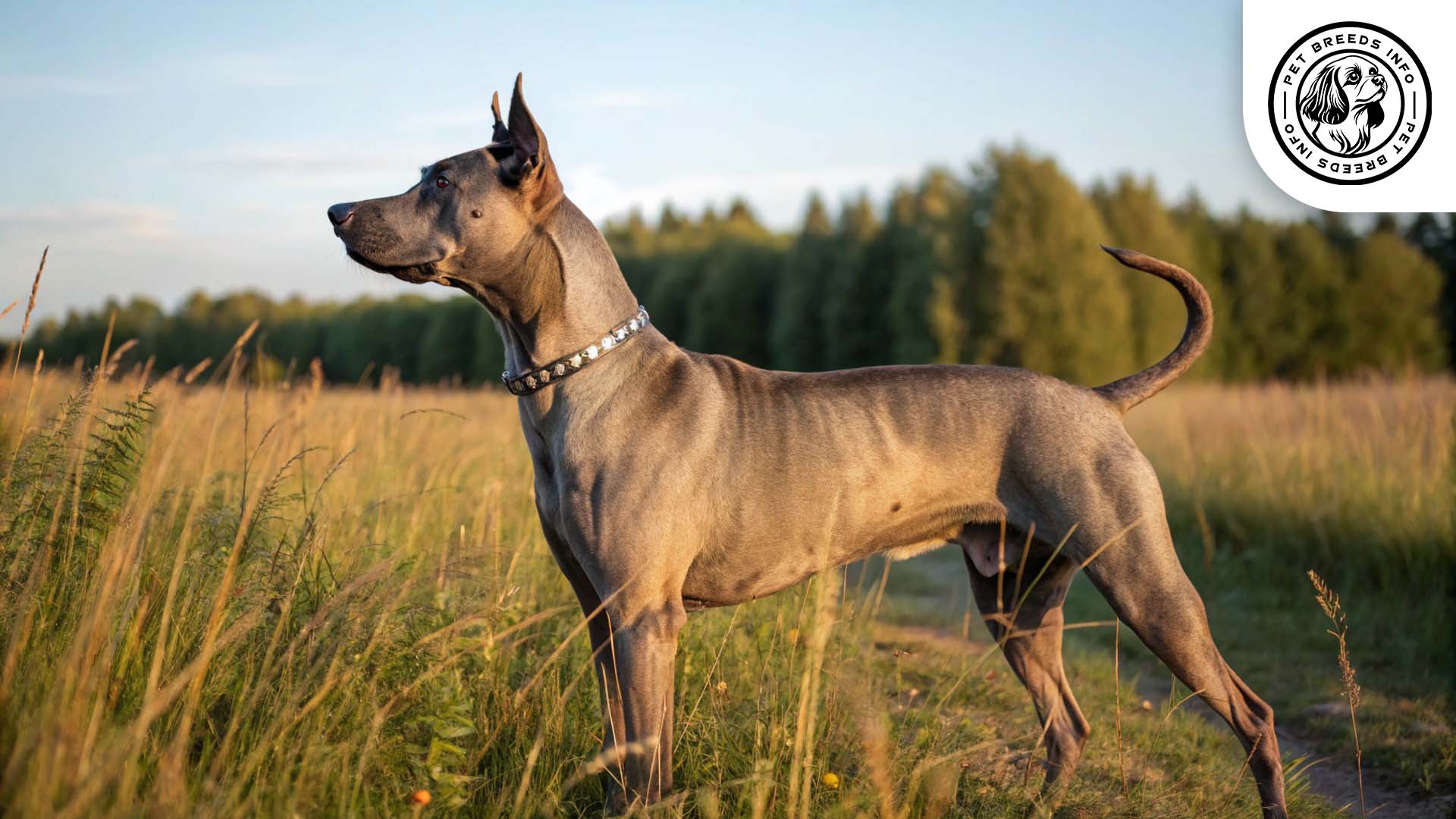
Personality and Temperament
The Thai Ridgeback is an intelligent, independent, and highly active breed. They learn quickly but can be stubborn, requiring consistency and patience in training.
They are extremely energetic and require regular physical and mental stimulation. Without adequate exercise, they may become restless or engage in destructive behaviors.
This breed is very loyal to its family but can be wary of strangers. While affectionate with its owners, a Thai Ridgeback is not overly needy. They form strong bonds with their humans but retain an independent nature.
They can be reserved around new people and other animals. Early socialization is essential to ensure they develop confidence and well-adjusted behavior.
Thai Ridgebacks have strong hunting instincts, meaning they may not be ideal for homes with smaller pets such as rabbits or guinea pigs. However, with proper training, they can coexist peacefully with other dogs and children.
Read More: Stabyhoun Dog
Care and Maintenance Requirements
The Thai Ridgeback is an active breed that requires regular daily exercise, including long walks, running, and playtime. They thrive when given a job or purpose.
Because of their energy levels, they are better suited for homes with access to a yard rather than apartments, although they can adapt to city living if exercised properly.
The short coat is easy to maintain, requiring occasional brushing to remove loose hair. They are relatively low shedders, but seasonal shedding may occur.
They are sensitive to cold weather due to their thin coat. In colder climates, they should wear a coat for extra warmth. They can tolerate heat but should always have plenty of water and shade.
Regular hygiene maintenance such as nail trimming, ear cleaning, and brushing their teeth will keep them healthy. Bathing should be done occasionally or as needed.
Diet and Nutrition
The Thai Ridgeback does well on high-quality dry kibble, wet food, or a raw diet tailored to its needs. Protein-rich diets are essential for maintaining their muscular physique.
They do not have specific dietary restrictions, but common allergens like wheat, soy, and corn-based fillers should be avoided.
Foods such as chocolate, onions, grapes, and excessive fat should never be given. A balanced diet with lean meats, vegetables, and healthy fats is ideal.
Adult Thai Ridgebacks should be fed twice a day with measured portions to avoid overeating. Puppies require more frequent feeding, typically three to four times a day.
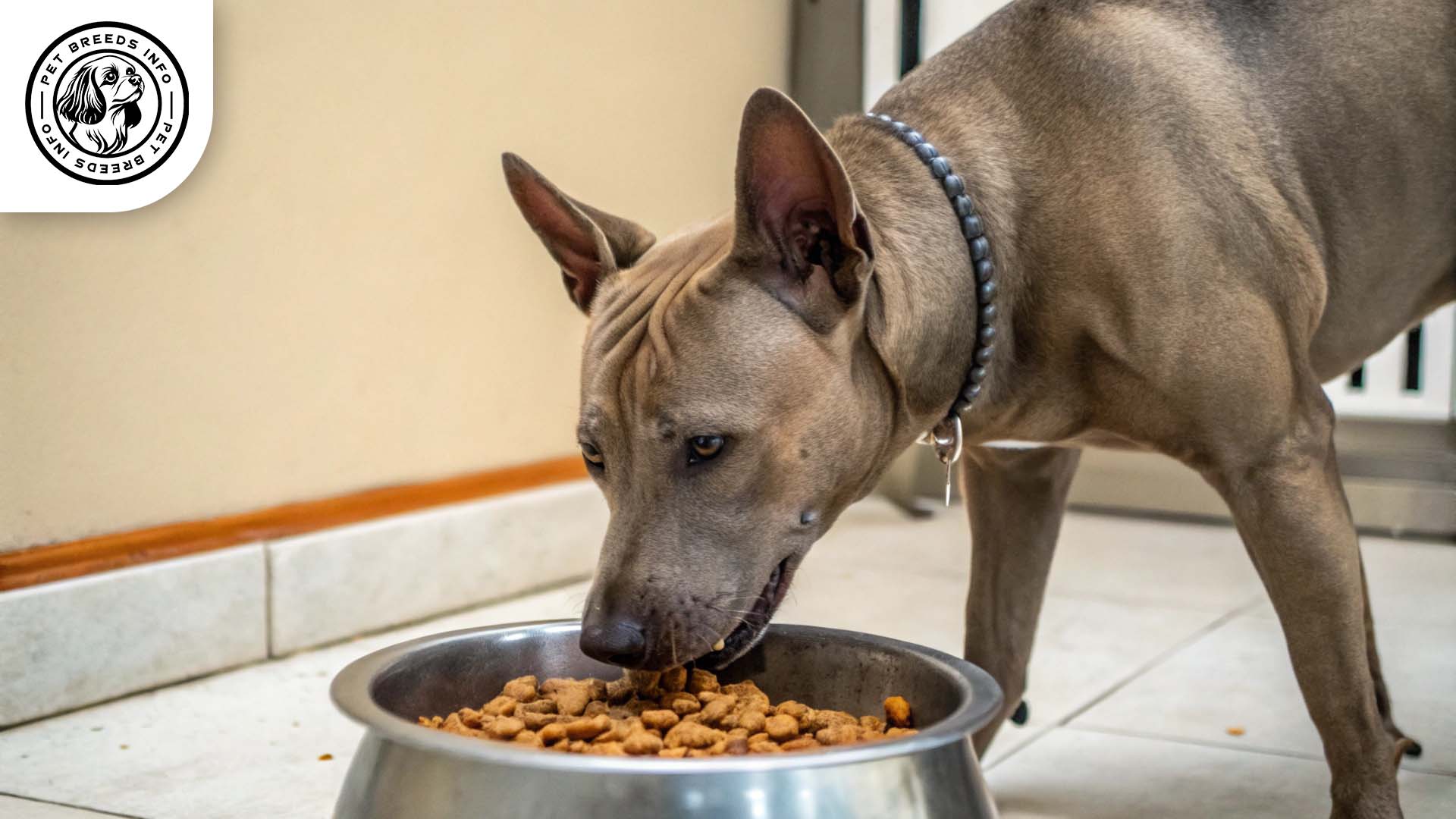
Health and Common Medical Issues
This breed is generally healthy but may be prone to certain conditions. Common health concerns include hip dysplasia, dermoid sinus (a genetic skin condition associated with the ridge gene), and allergies.
Thai Ridgebacks are known for their resilience but should receive regular check-ups with a veterinarian to monitor their health.
Their average lifespan ranges from 12 to 15 years, with proper care, nutrition, and exercise contributing to their longevity.
Routine vaccinations, parasite prevention, and dental care are crucial for overall well-being.
Read More: Swedish Lapphund Dog
Training and Behavior Management
The Thai Ridgeback is an intelligent but independent breed, making training somewhat challenging for first-time dog owners. They respond best to positive reinforcement and consistency.
Early training and socialization are crucial. They should be exposed to different environments, people, and other animals from a young age to prevent stubbornness and territorial behavior.
Reward-based training using treats and praise works best. Harsh corrections can lead to resistance or distrust.
Establishing clear rules and boundaries will help ensure a well-behaved Thai Ridgeback.
Interaction with Other Animals and Humans
Thai Ridgebacks are generally affectionate toward their family members but may be aloof around strangers. They can be excellent guard dogs due to their protective nature.
They can get along with children if properly socialized, but their strong prey drive may make them unsuitable for homes with small animals.
They can coexist with other dogs if introduced gradually, but supervision is advised, especially with dominant breeds.
This breed is better suited for experienced dog owners or active individuals who can meet its exercise and training needs.
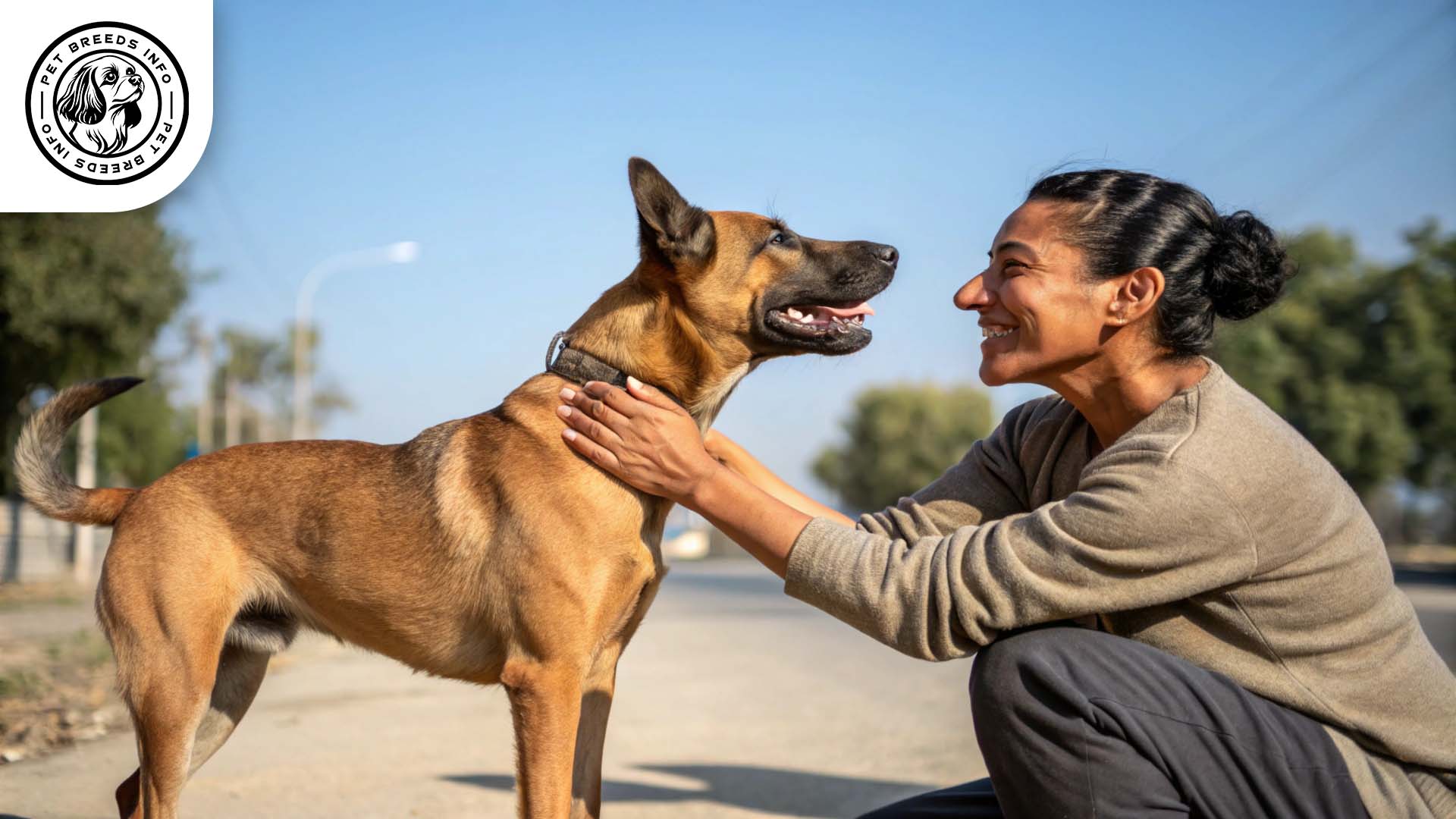
Price and Availability
The Thai Ridgeback is a rare breed outside of Thailand, making it more expensive than other popular breeds. Prices can range from $1,500 to $3,000 depending on lineage and breeder reputation.
When adopting or purchasing a Thai Ridgeback, it is crucial to research reputable breeders who conduct health screenings.
Adoption from shelters or breed-specific rescues may be possible, though the breed’s rarity makes it less common in shelters.
Read More: Swedish Vallhund Dog
Conclusion and Final Thoughts
The Thai Ridgeback is a loyal, intelligent, and highly active breed best suited for experienced dog owners who can provide firm training and ample exercise.
They thrive in homes with space to roam but can adapt to smaller living environments with dedicated activity and training.
Potential owners should consider their assertive temperament, energy levels, and need for training before choosing this breed.
With the right owner, a Thai Ridgeback can become a loving and devoted companion.
FAQ
Is the Thai Ridgeback a good guard dog?
Yes! Their protective nature and loyalty make them excellent watchdogs.
How much exercise does a Thai Ridgeback need?
A lot! They require daily runs, long walks, and mental stimulation.
Are Thai Ridgebacks easy to train?
They are intelligent but independent, requiring firm, consistent training.
Do they get along with other pets?
Their strong prey drive makes them wary of small animals but they can coexist with dogs if socialized early.
Can they live in cold climates?
They are sensitive to cold and need protection, like coats in winter.
